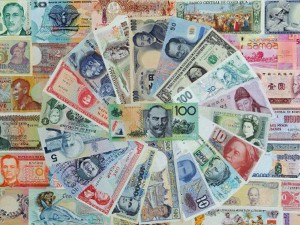China and Japan begin direct currency trading

The Bangko Sentral ng Pilipinas said Thursday, May 31, 2012, that it may have to scale down its growth forecasts on the country’s balance of payments and gross international reserves this year due to the prolonged debt crisis in parts of Europe and its impact on the local economy. AFP PHOTO
Shanghai–China and Japan started direct currency trading on Friday as Beijing marked another stage on its journey to foster the yuan’s use internationally in line with its growing economic clout.
Market participants can now swap Japanese yen for Chinese yuan without having to use the US dollar as an intermediary currency, making foreign trade settlement more convenient and cutting transaction costs.
The move comes as China, the world’s second-largest economy just ahead of Japan, gradually moves to make the yuan freely convertible with an eye towards rivalling the mighty dollar, analysts said.
China maintains a tight grip on its currency, which is not convertible on the capital account, over fears that speculative flows could hurt its economy. That grip has long fostered trade tensions with the United States.
“Yuan-yen direct trading is just a small step toward making the yuan a reserve currency, but what’s foremost is whether China can carry out future reforms,” Zhang Zhiwei, chief China economist of Nomura Securities, told AFP.
Article continues after this advertisement“The move may be another step toward free convertibility of the currency, but from a long-term perspective, China has a long way to go,” he said.
Article continues after this advertisementChina set the daily mid-point at 8.0686 yuan to 100 yen on Friday, weakening from 8.0293 on Thursday, according to the China Foreign Exchange Trade System, operator of China’s national forex market.
Dealers confirmed the start of dealings on China’s market with the yuan opening at 8.1074 to 100 yen.
The Chinese currency will be allowed to fluctuate within a 3.0 percent band above or below that central parity rate, according to media reports. China has not publicly announced the trading band.
For the first time, China set the rate based on an average directly from market makers, instead of using the US dollar as a base, the market operator said in a statement before trading began.
British banking giant HSBC, one of the newly appointed market makers in China, said the launch of direct trading will help build a benchmark for non-dollar transactions.
“It is also a significant step forward in the internationalisation of China’s currency, supporting the growing demand for yuan payment and settlement globally,” David Liao, managing director of global markets for HSBC China, said in a statement.
Just last month, China made another move towards liberalisation, allowing the yuan to trade against the dollar in a wider 1.0 percent band on both sides of the mid-point, double the previous 0.5 percent.
China’s tightly controlled forex regime is a long-running source of friction with the United States, which accuses Beijing of artificially undervaluing the yuan to boost exports, and which wants more flexibility.
The yuan trades freely offshore, so China’s trading-band restriction will not apply in dealings on Tokyo’s foreign exchange market.
In early Tokyo trade, one yuan stood at 12.335 yen.
Rates in the Chinese and Japanese markets could be different at the outset but are likely to converge very quickly, traders in Tokyo said.
“It is impossible to make money through price gaps between the two markets,” said Akira Hoshino, head of forex trading at the Bank of Tokyo-Mitsubishi UFJ.
China overtook Japan to become the world’s second-largest economy in 2010, and the neighbours are forging closer business ties despite frequent diplomatic spats over territorial claims and lingering historical animosities.
China is Japan’s largest trading partner, but about 60 percent of their mutual trade is denominated in US dollars.
The forex launch will save about $3.0 billion in annual costs tied to using the dollar in trade transactions, Chinese state media have reported.